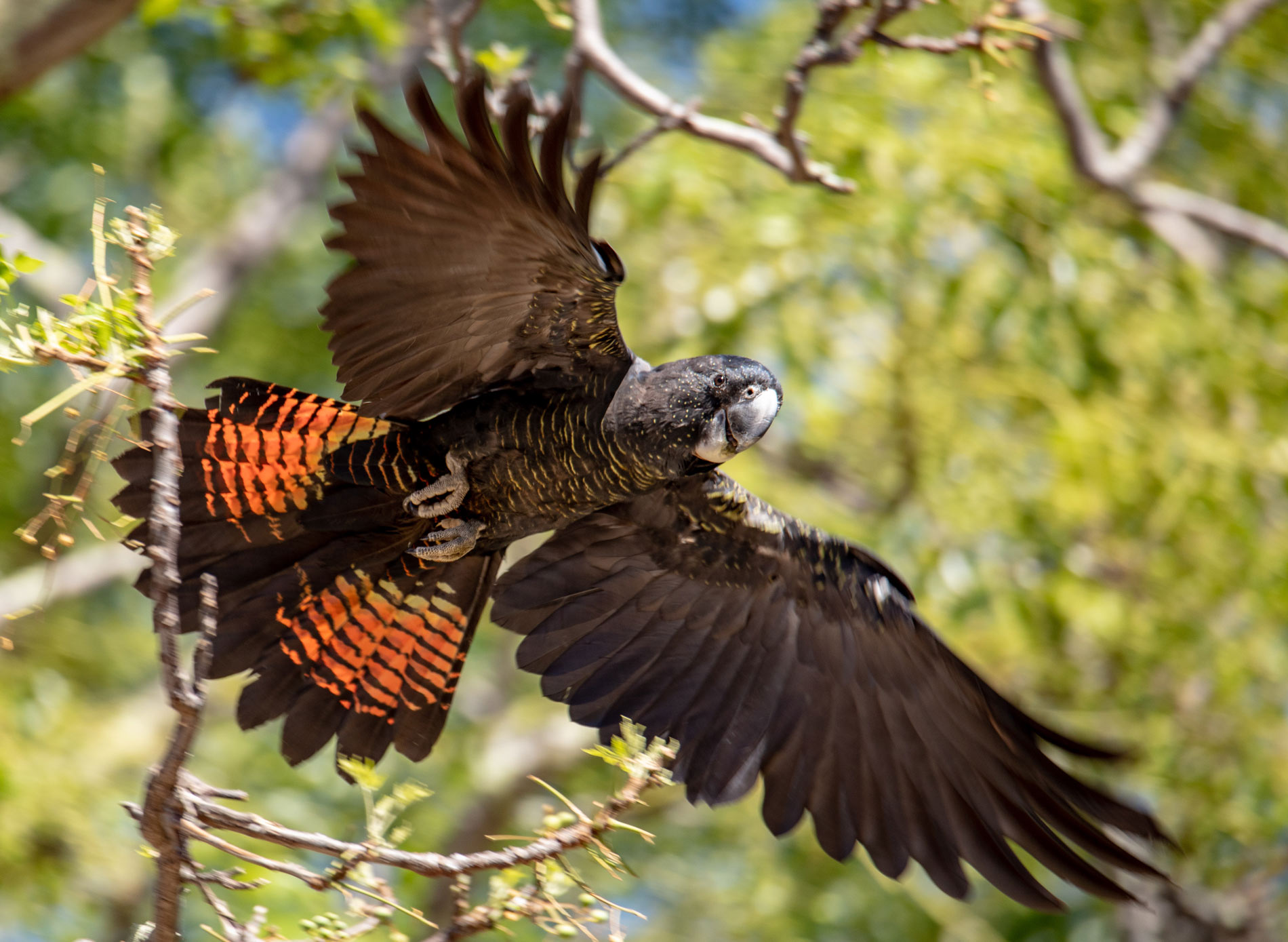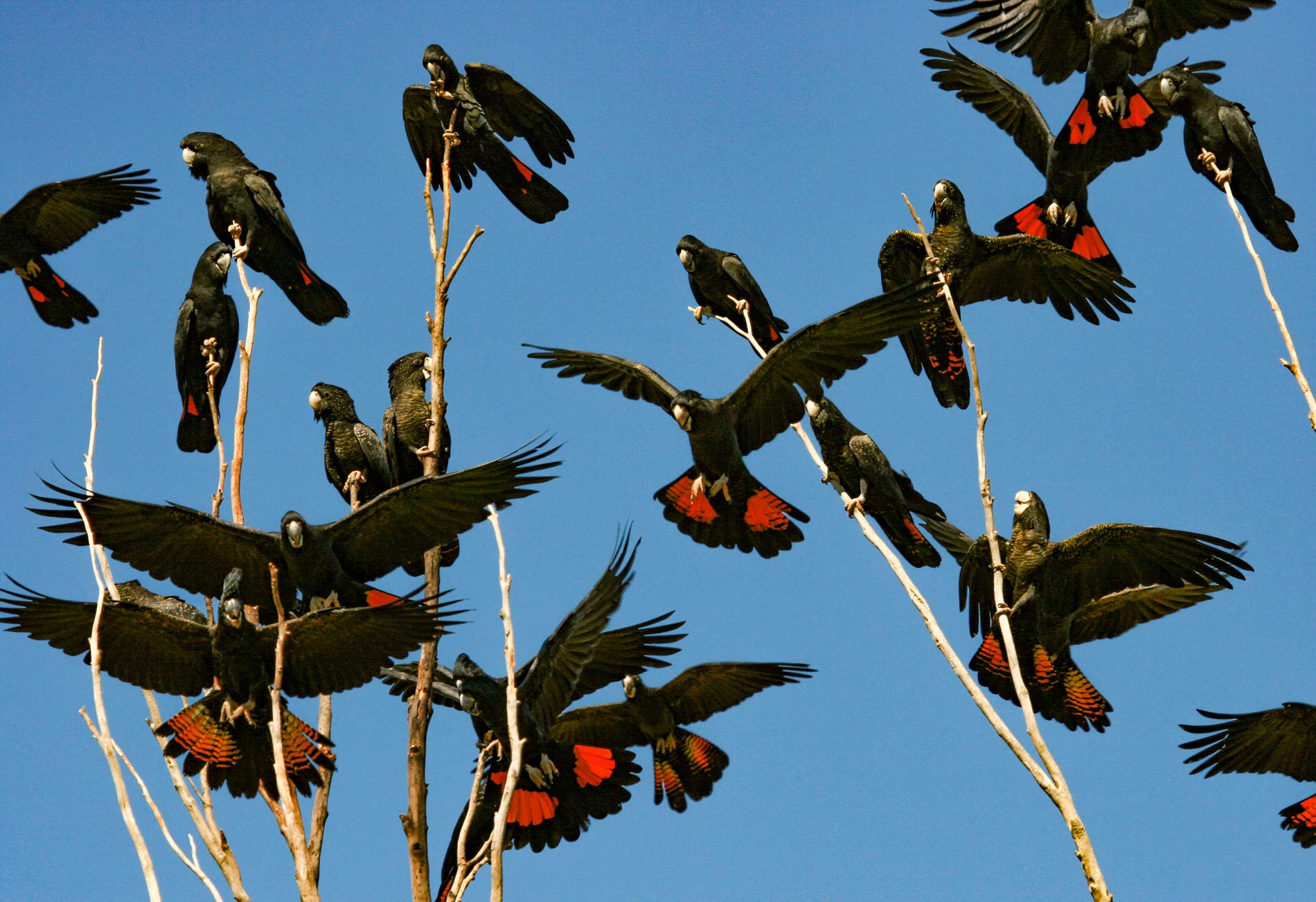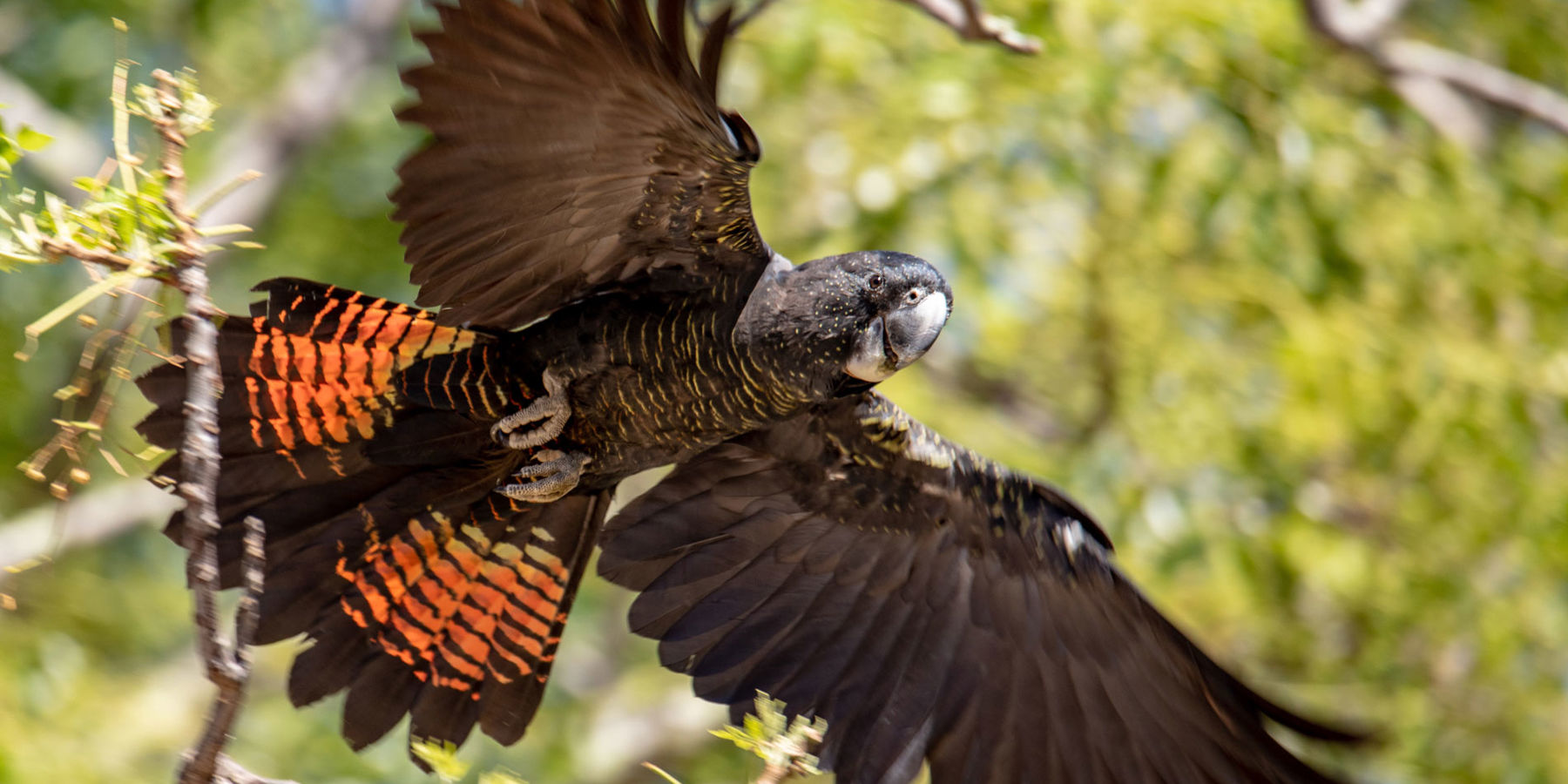Western Power is taking steps to help conserve one of Western Australia’s most recognisable and threatened native species, the red-tailed black cockatoo (Calyptorhynchus banksii naso) by making it safer for the birds around high voltage power infrastructure.
Western Power Environmental Specialist Michelle Davies said wildlife contact with powerlines could injure wildlife and lead to power faults and fires. Incidents involving threatened species particularly concerning.
“Recognising the importance of protecting native wildlife, we’ve implemented a program to reduce the risk of contact incidents associated with its electrical lines and equipment while also ensuring a safe and reliable power supply,” she said.

The program has three key areas:
- The installation of bird covers – either matt tapes or adhesive spikes – on the cross-arms of power poles and insulating all bare conductors and fittings around cross-arms. Where necessary, additional anti-swan cross arms are also installed. These long cross arms separate conductors further so that birds sitting on them cannot touch each other.
- Vegetation management activities, including pruning tree branches around power poles, prevents contact between conductors or cross-arms and birds perched on nearby trees. This preventative measure has the added benefit of discouraging possums from jumping onto pole cross-arms.
- Wildlife protection is considered in the technical specifications of all new asset tenders. For example, new pole top switches being used across the Western Power network of poles and wires have a larger separation between their live components for fauna to move and reducing the risk of potentially harmful or deadly simultaneous contact.
Ms Davies said environmental assessments and a specially developed in-house risk and assessment tool was essential in identifying and responding to areas of the network that pose a risk to native wildlife. “In a recent incident, two red-tailed black cockatoos were electrocuted through contact with a high voltage power pole. We investigated the incident, reported it to the relevant authorities and have taken steps to prevent a reoccurrence,” she said.
“Our investigation revealed that while conductors and connections on the impacted pole were insulated, contact between the birds and the pole’s uninsulated short cross-arm had caused the incident. We found that within the area there are small sections where the tops of poles aren’t insulated and if a bird comes into contact with these, they run the risk of electrocution.
“Using our risk and assessment tool, we identified a suitable response and just two days after the incident a bird cover was installed to deter red-tailed black cockatoos and other bird species from perching.”
Commonly found in bushland areas around metropolitan Perth and in the State’s south west, the much-loved red-tailed black cockatoo is listed as vulnerable under the Biodiversity Conservation Act 2016 and Commonwealth Environmental Protection and Biodiversity Conservation Act 1999.

